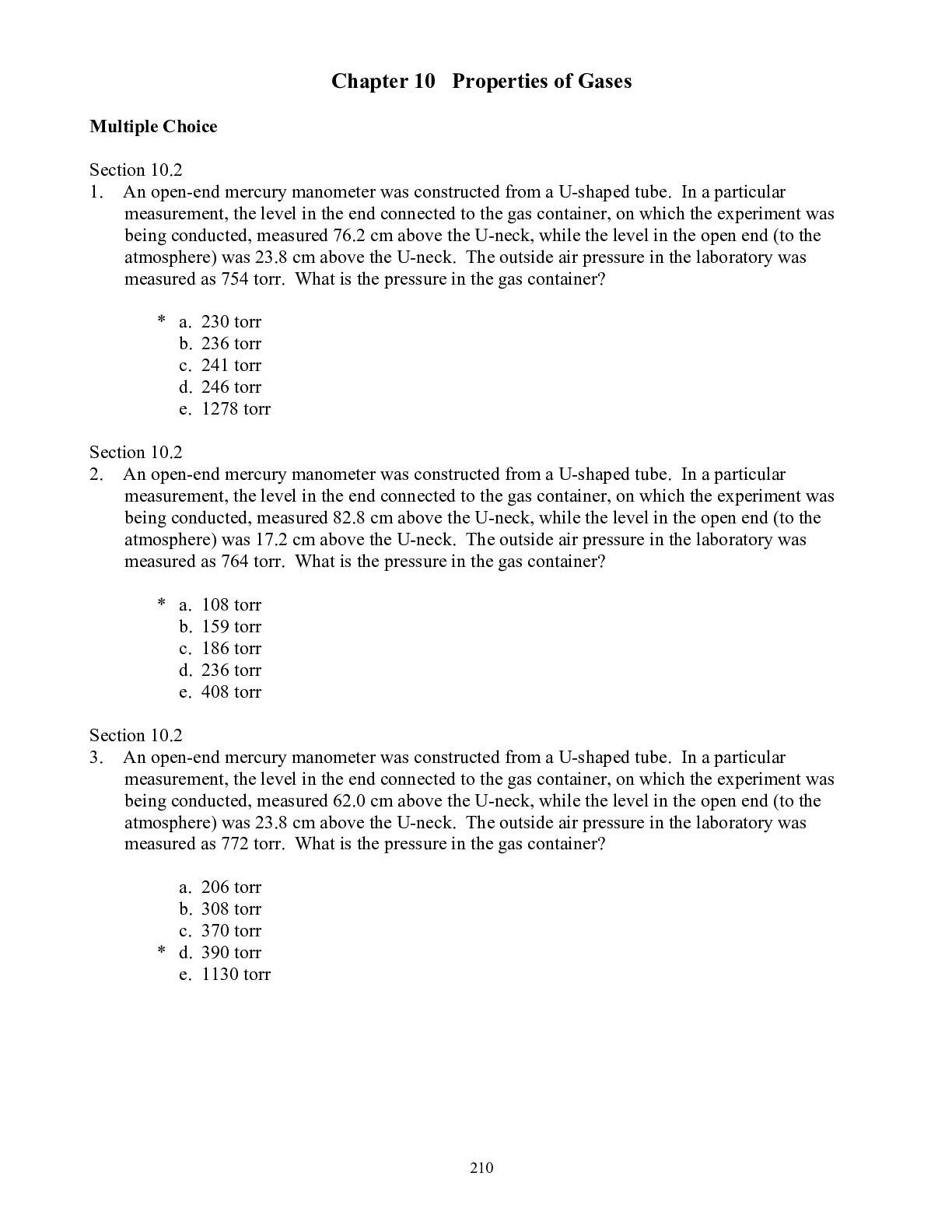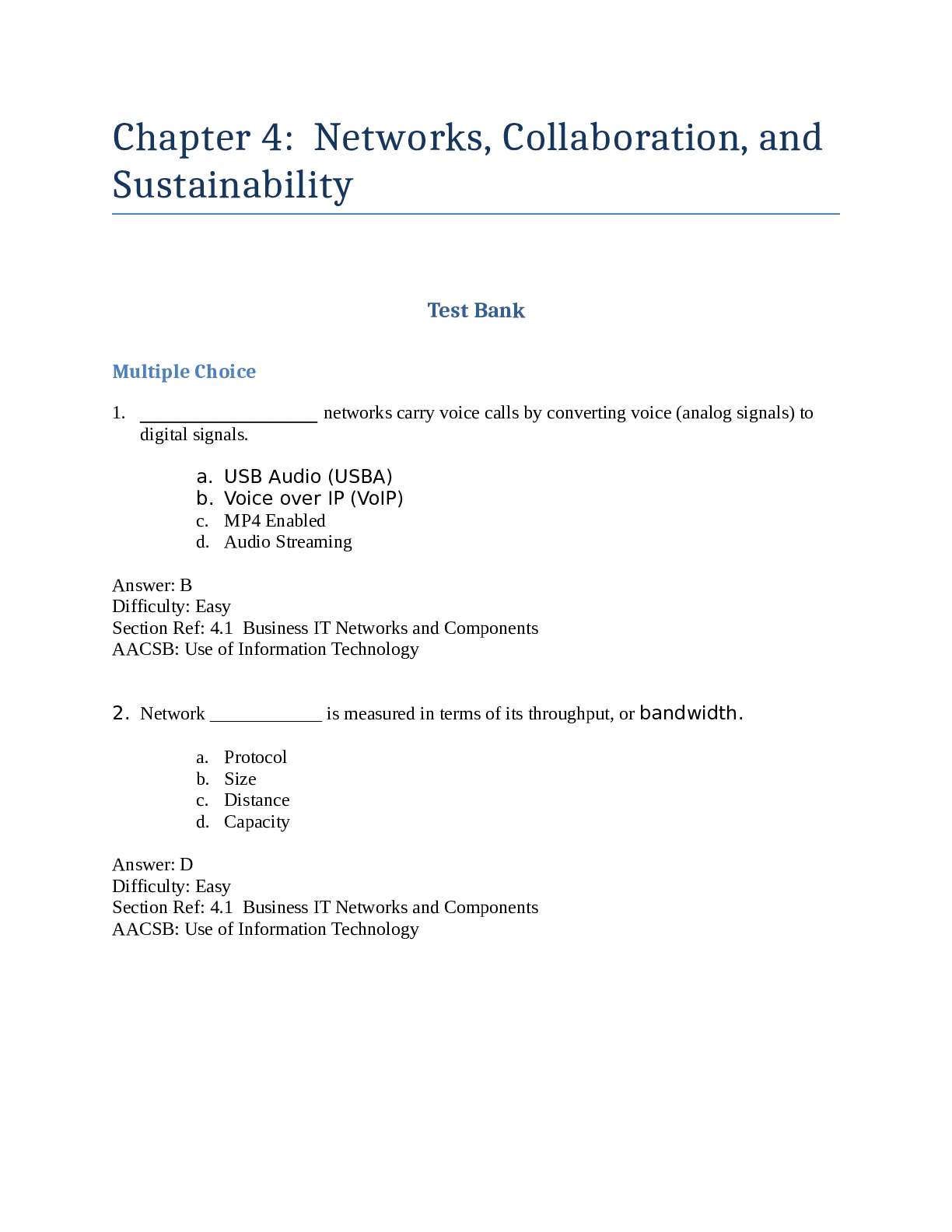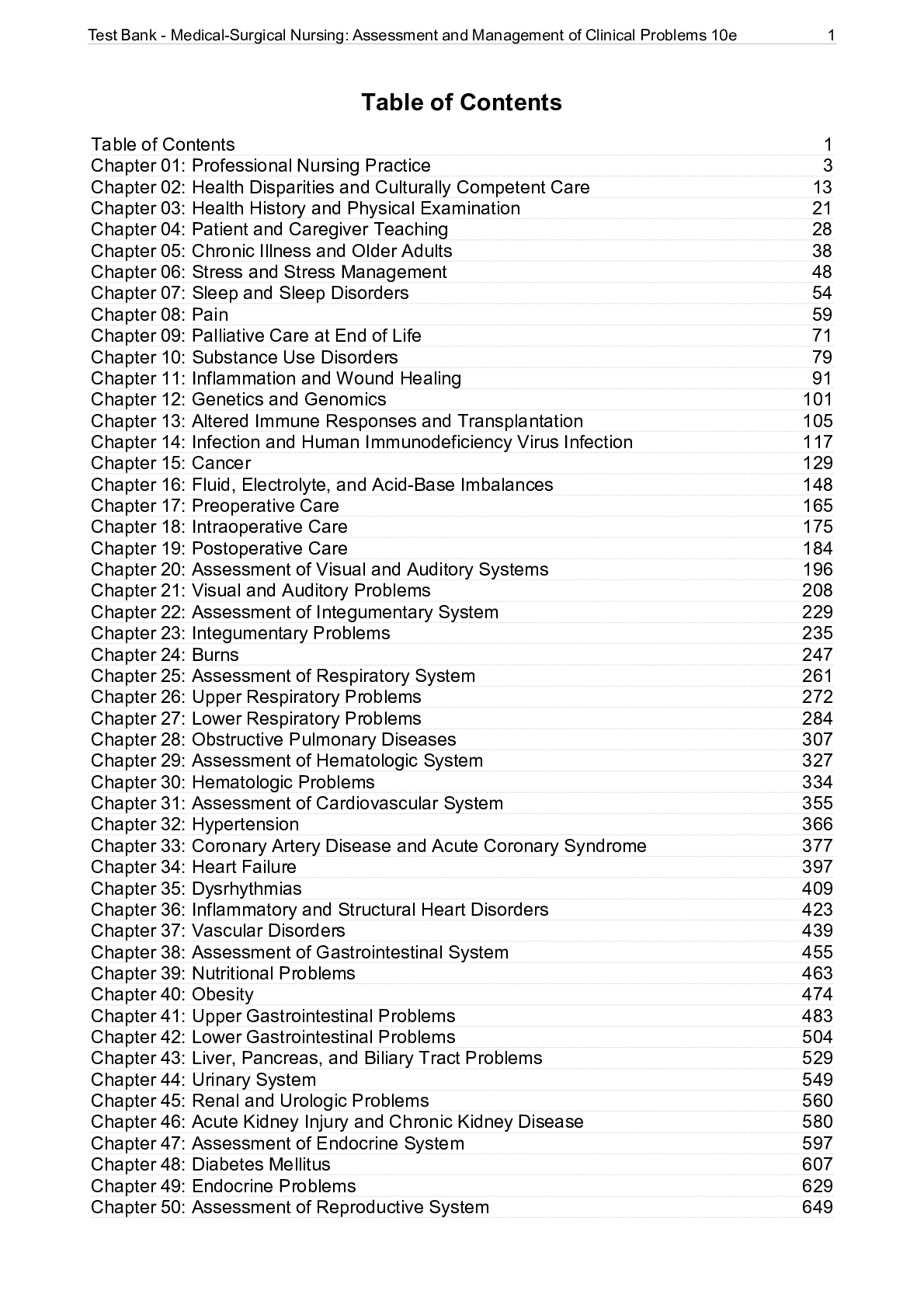Information Technology > TEST BANK > ECE 660 Chapter 7: Mobile Technologies and Commerce Test Bank (SOLVED) (All)
ECE 660 Chapter 7: Mobile Technologies and Commerce Test Bank (SOLVED)
Document Content and Description Below
ECE 660 Chapter 7: Mobile Technologies and Commerce Test Bank (SOLVED) Multiple Choice 1. Whenever Kellie Wolf shops at local stores, she uses her smartphone to scan the barcodes of products so... that she can compare prices from other stores as well as online shopping sites. Her smartphone app also allows her to check product reviews and get product information. Using a mobile device as a shopping aid in this manner is called: a. Mobility retail b. Showrooming c. Barcoding d. Snap coding Answer: B Difficulty: Easy Section Ref: Opening Case: Macy’s Races Ahead with Mobile Retail Strategies AACSB: Use of information technology 2. While many retailers are frustrated by the phenomenon of shoppers using smartphones to comparison shop in their stores, Macy’s “Backstage Pass Program” actually encourages users to access product information and promotional videos using ______________________. a. QR codes and short message service (SMS) b. Email c. Social Media d. A mobile Macy’s app Answer: A Difficulty: Easy Section Ref: Opening Case: Macy’s Races Ahead with Mobile Retail Strategies AACSB: Use of information technology 3. Throughout Macy’s stores, special displays encourage shoppers to view promotional videos and access product information using their smart phones or other mobile devices. This type of in-store promotion is called a(n) _________________________. a. Integrated retailing strategy b. Dual modality retailing strategy c. Mobile display strategy d. Visual retailing strategy Answer: C Difficulty: Easy Section Ref: Opening Case: Macy’s Races Ahead with Mobile Retail Strategies AACSB: Use of information technology 4. Another key mobile strategy being used by Macy’s and other retailers across the country is to grow their SMS database by offering customers coupons and other promotions via _______________. a. Email b. YouTube videos c. Dedicated retail apps d. Text messages Answer: D Difficulty: Easy Section Ref: Opening Case: Macy’s Races Ahead with Mobile Retail Strategies AACSB: Use of information technology 5. To take advantage of the growth of mobile device use, many retailers like Macy’s are using Mobile Check-in Strategies and partnering with companies like ______________________ that use mobile apps to alert retailers when a customer is in their store. a. Google and YouTube b. Twitter c. Foursquare and Shopkick d. Verizon and AT&T Answer: C Difficulty: Easy Section Ref: Opening Case: Macy’s Races Ahead with Mobile Retail Strategies AACSB: Use of information technology 6. Customers can pay for products at Macy’s using Google Wallet, a mobile payment app. At the register, customers simply tap their phones on a(n) _______________________ device in order to transfer funds to Macy’s. a. Augmented reality b. Near field communications (NFC) c. PayPal d. ATM Answer: B Difficulty: Easy Section Ref: Opening Case: Macy’s Races Ahead with Mobile Retail Strategies AACSB: Use of information technology 7. Which of the following is not a type of mobile computing device described in your textbook? a. Laptop computer b. Notebook computer c. Tablet computer d. Backpack computer Answer: D Difficulty: Easy Section Ref: 7.1 Mobile Computing Technology AACSB: Use of information technology 8. Google’s Project Glass aims to make it possible for people to access network based applications using a device that is similar to _________________________. a. A set of headphones b. A pair of glasses c. A wristwatch d. A ceramic slate or tablet Answer: B Difficulty: Easy Section Ref: 7.1 Mobile Computing Technology AACSB: Use of information technology 9. Which of the following is not one of the popular mobile operating systems described in your textbook? a. Android OS b. iOS (Apple) c. Path OS d. Symbian OS Answer: C Difficulty: Easy Section Ref: 7.1 Mobile Computing Technology AACSB: Use of information technology 10. As of 2012, which of the following is the most popular mobile operating system globally with approximately 46% market share? a. Android OS b. iOS (Apple) c. Path OS d. Symbian OS Answer: A Difficulty: Medium Section Ref: 7.1 Mobile Computing Technology AACSB: Use of information technology 11. Increasingly, city governments, airports, train stations, restaurants, cafes and owners of other public areas are making access to ________________ available to the public for free. a. 3G and 4G networks b. Wired LANs c. Telecommunications networks d. Wi-Fi hotspots Answer: D Difficulty: Medium Section Ref: 7.1 Mobile Computing Technology AACSB: Use of information technology 12. Which of the following is not considered one of the three technological foundations of mobile computing? a. Mobile devices b. Mobile operating systems c. Mobile software d. Mobile networks Answer: C Difficulty: Medium Section Ref: 7.1 Mobile Computing Technology AACSB: Use of information technology 13. Which of the following explains why it is much more challenging to develop websites and software apps for the mobile market compared to the traditional personal computer market? a. Mobile consumers are much more demanding and have higher standards for quality. b. The greater number of mobile devices and operating systems makes it hard to create websites and apps that work well with all device/OS combinations. c. It’s hard to predict if the mobile market will even exist a few years from now. d. Mobile OSs are dramatically more complicated than traditional PC OSs. Answer: B Difficulty: Medium Section Ref: 7.1 Mobile Computing Technology AACSB: Use of information technology 14. Using a coupon on your cell phone when checking out at the Hard Rock Café, or checking in to a retail location using FourSquare’s mobile app is an example of ______________________ (choose the most specific answer). a. Mobile Commerce b. Mobile eCommerce c. Mobile Retailing d. Mobile Marketing Answer: C Difficulty: Medium Section Ref: 7.2 Mobile Commerce AACSB: Use of information technology 15. The buying or selling of goods and services using a wireless, handheld device such as a cell phone or tablet (slate) computer is called ______________________ (choose the most specific answer). a. Mobile Commerce b. Mobile eCommerce c. Mobile Retailing d. Mobile Marketing Answer: A Difficulty: Medium Section Ref: 7.2 Mobile Commerce AACSB: Use of information technology 16. Ordering a pair of shoes from Zappos.com using a mobile app, or purchasing music from iTunes from your iPod is an example of ______________________ (choose the most specific answer). a. Mobile Commerce b. Mobile eCommerce c. Mobile Retailing d. Mobile Marketing Answer: A Difficulty: Medium Section Ref: 7.2 Mobile Commerce AACSB: Use of information technology 17. Sending special offers to customers who have opted in to receive discounts via SMS text message or advertising a brand on a popular mobile game app like Angry Birds is an example of ___________________________ (choose the most specific answer). a. Mobile Commerce b. Mobile eCommerce c. Mobile Retailing d. Mobile Marketing Answer: D Difficulty: Medium Section Ref: 7.2 Mobile Commerce AACSB: Use of information technology 18. Which of the following is not one of the factors listed in your textbook as a reason why consumers and businesses have been slow to embrace mobile commerce? a. Concerns about privacy and security b. Consumers find mobile devices too complicated to use for commerce c. Limited and inconvenient mobile payment options d. Lack of technological standardization (devices, OSs, browsers, etc.) Answer: B Difficulty: Medium Section Ref: 7.2 Mobile Commerce AACSB: Use of information technology 19. Instead of treating mobile commerce and traditional retailing as separate retail channels, the National Retail Federation recommends an integrated strategy called _________________ retailing. a. Integrated market b. Multi-channel c. Omni-channel d. Multi-tier Answer: C Difficulty: Medium Section Ref: 7.2 Mobile Commerce AACSB: 20. Retailers who employ an Omni-channel strategy create a seamless brand experience for customers who might have brand contacts (e.g. advertising, sales support, product information, purchase, returns, etc.) through ________________________. a. Multiple channels b. The Internet c. A centralized call center d. In-store experience Answer: A Difficulty: Medium Section Ref: 7.2 Mobile Commerce AACSB: [Show More]
Last updated: 1 year ago
Preview 1 out of 50 pages
Instant download
.png)
Buy this document to get the full access instantly
Instant Download Access after purchase
Add to cartInstant download
Reviews( 0 )
Document information
Connected school, study & course
About the document
Uploaded On
Sep 04, 2021
Number of pages
50
Written in
Additional information
This document has been written for:
Uploaded
Sep 04, 2021
Downloads
0
Views
66

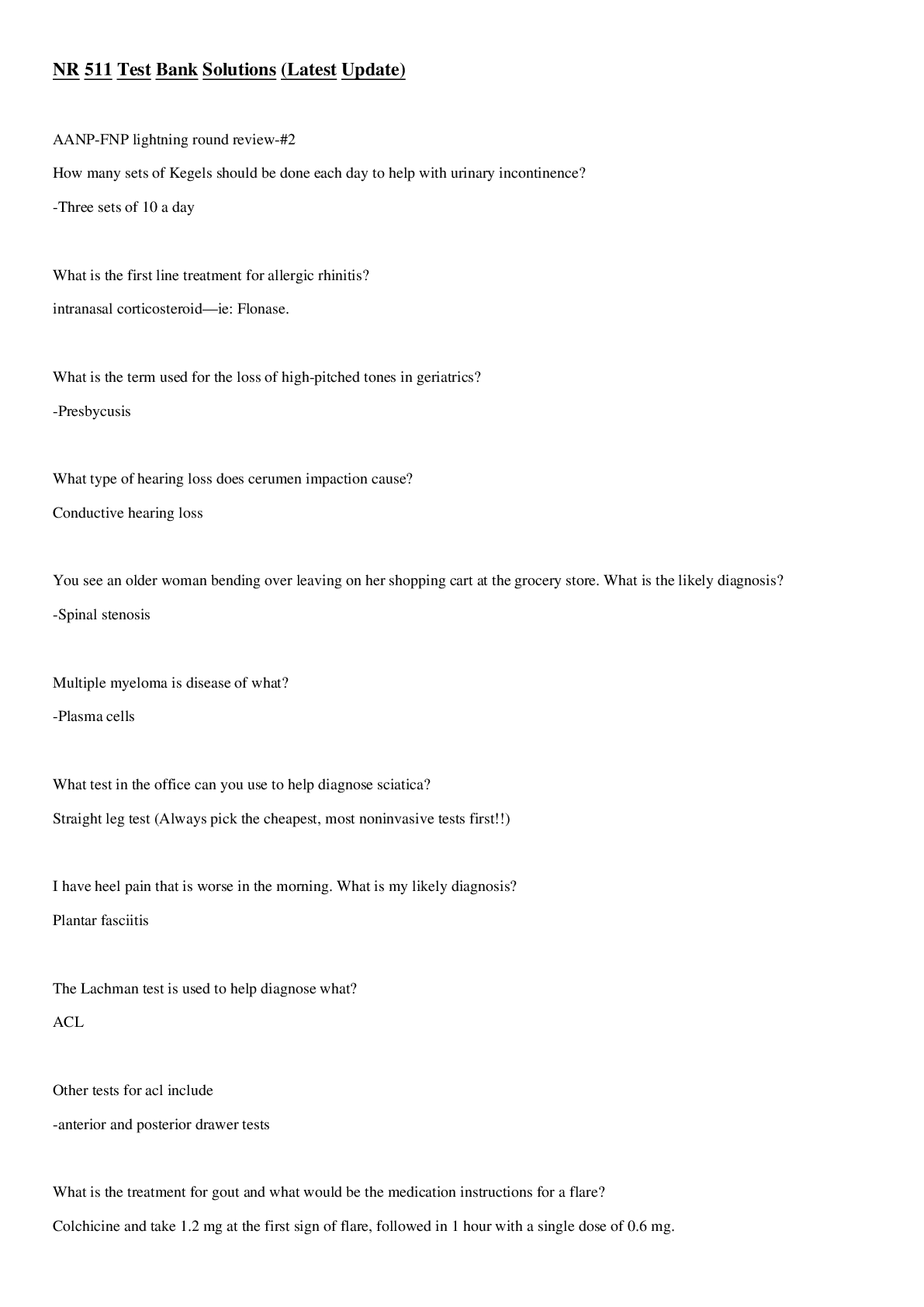


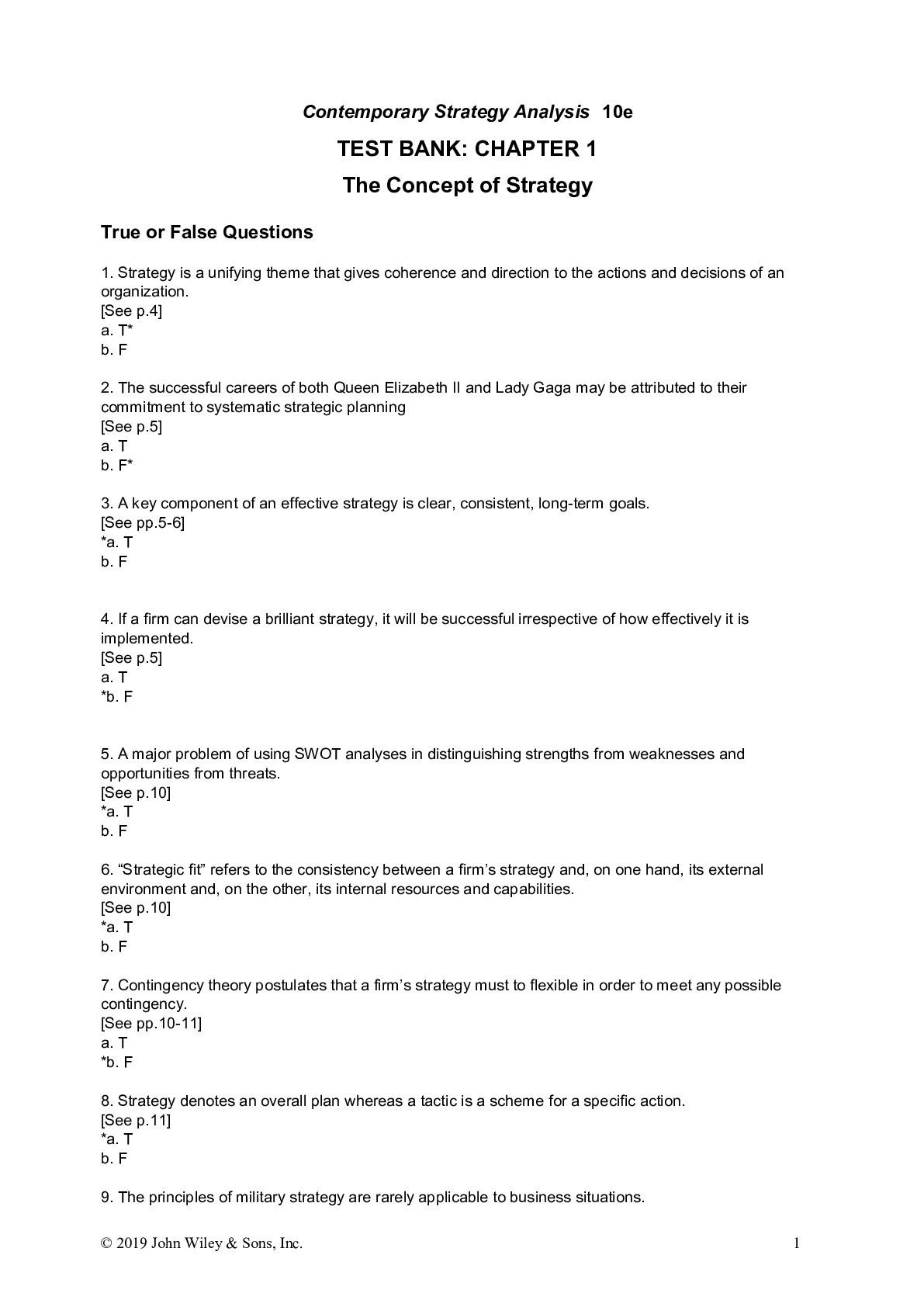
.png)
